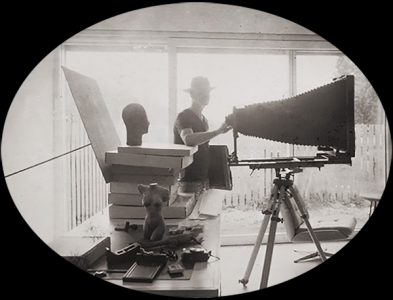
Werner Schnelle
The Salzburg art photographer Werner Schnelle has devoted his work to reflecting on the process of analogue photography. The focal point of his interest is not the photographed motifs or an epistemological understanding of the world as gained through documentary photography. Rather, in his photographs, he prefers to explore the way in which the photographic moment of image capture and recording itself proceeds.
For this he uses a wide array of photographic equipment, techniques and processes, including the use of extra large-format studio cameras and photographic techniques that dispense with cameras altogether, producing images on photo paper simply through exposure in the darkroom, i.e. photograms and chemigrams. He also began very early to explore the possibilities afforded by Polaroid photography, a process which, long before the invention of digital photography, laid claim to simultaneously capturing and reproducing motifs. Besides going to these considerable technological lengths Werner Schnelle also adopted a reductionist approach as he experimented with photographic methods that only use photo paper and light to produce an image; in other words, no photographic chemicals.
In a sizeable group of works that comprises optical works, light-works and light graphics, the emphasis is on light as the essence and ‘name giver’ of photography. In these images the abstract formal idiom of the light pendulum or random movements is just as much in evidence as serial effects triggered by the setting options particular to large-format cameras.
Another artistic approach by Werner Schnelle is dedicated to his work with unique paper and film negatives (Negativ-Unikaten, or unique negatives). With these images, analogue photo paper (and, occasionally, film) is inserted directly into the large-format camera and exposed. This produces a large-format negative on paper which, after development straight from the camera, is then exhibited in the gallery without any additional processing or copying. As viewers, we are confronted with the immediacy of the inceptive trace of the image, allowing us to recognise the special aesthetic quality of the negative image. The photographed objects and landscapes appear before us in a transformed stylistic idiom: new structures become apparent, and the inverted distribution of light literally highlights elements that would otherwise go unnoticed in a ‘normal view’.
These ‘unique’ film and paper negatives (Negativ-Unikate) explore a fundamental process in analogue photography that vanished with the advent of digital photography. Presumably it is this loss we have become aware of in the wake of the all-conquering success of digital photography, a loss highlighted and showcased by Werner Schnelle in this new work.
In summary, it could be said that Werner Schnelle, in his art photography work, is seeking to contribute to the analysis of the photographic perspective. As analogue photography is gradually sidelined by its digital counterpart, these explorations become all the more topical since many photographic parameters are retained while others change. One essential aspect that has changed in digital photography is the notion of the unique image. Many of Werner Schnelle’s works are unique images in the narrowest sense, i.e. no second photograph can correspond to the first: each image is physically unique. Werner Schnelle’s art photography therefore resists the prevailing trend that entails the use of reproduction techniques in digital photography, a trend that now dominates today’s gallery sector with ever more sophisticated cameras and perfected inkjet printers.
Kurt Kaindl, Salzburg 2019
PUBLICATIONS
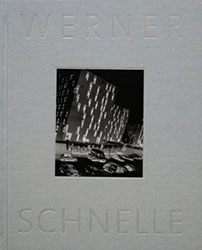
Werner Schnelle
UNIQUE ANALOGUE FOTOWORKS
Edition Fotohof
2019
Austrian fine art photographer Werner Schnelle (b. 1942) has long been fascinated with alternative ways of reproducing an image, whether it is a photogram, a negative image, a solarized abstraction or a manipulated Polaroid print. His tools are his cameras, darkroom, chemistry, printing paper, and imagination. The end results are unique images made without the use of sophisticated digital software or inkjet printers. Schnelle’s images are often made directly on photo paper exposed while in a large format camera, and then hand-developed and manipulated in the darkroom. His love of the nonnarrative aspect of photography grew from his interest in the first alternative images created by the great photographers of the 1920s and 30s, such as Man Ray and László Moholy-Nagy. Schnelle’s own work began in the late 1970s and continues into the early twenty-first century. Although the artist is not internationally known, his challenging use of the photographic medium makes this first-time survey an engaging and thoughtful journey into the abstraction of the image.
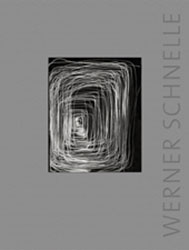
Werner Schnelle
PHOTOGRAPHS
Edition Fotohof - edited in connection to the solo exhibition „WERNER SCHNELLE - PHOTOGRAPHIC CONCEPTS“ in the Museum of Modern Art Salzburg
2009
Imagine pure form captured as light on paper – it’s almost indescribable, yet those are the photographs of Austrian photographer Werner Schnelle. In this book’s high-quality, large-format duplex prints, the viewer can appreciate the detail and subtlety of Schnelle’s contact prints and process engravings that conjure up the Bauhaus, Moholy-Nagy and the “Construct” movement in Europe. Insightful commentaries by Margit Zuckriegl and Kurt Kaindl provide an insight into a photographic approach which has been embraced by only a small group of fine art photographers.
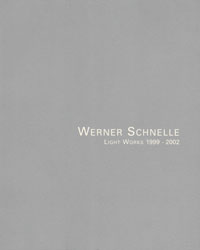
Werner Schnelle
LIGHTWORKS 1999 - 2002
Eigenverlag, Text Margit Zuckriegl
2002
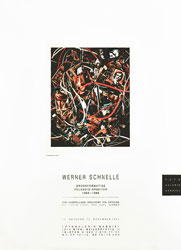
Werner Schnelle
MACHINES OF SPEED
Large Polaroid Works 1982 - 1986
Eigenverlag, Text Carl Aigner
1986
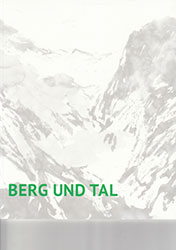
MOUTAIN AND VALLY
Landscape Works
NÖART - Niederösterreichische Gesellschaft für Kunst und Kultur
2015
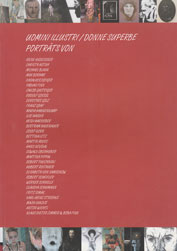
PORTRAITS
Cultutral Institut of Belgrad“
2013
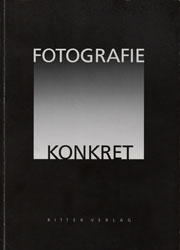
PHOTOGRAPHY CONCRETE
Ritter Verlag
2006
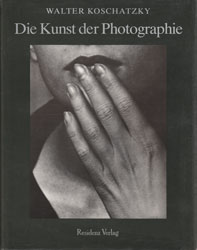
Walter Koschatzky
THE ART OF PHOTOGRAPHY
Residenz Verlag